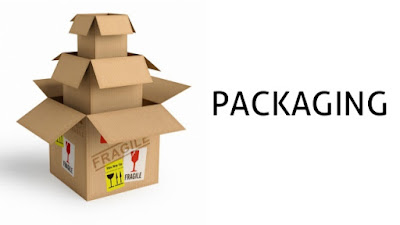Packaging: Meaning, Role, Levels, and Functions of Packaging
Concept of Packaging
Packaging means a case, container, wrapper, or other receptacles for packing goods. It can be made of metals, plastics, wood, paper, glass, laminates, polyester or HDPE.Packaging is the designing and producing of the container or wrapper for a product in order to prepare the goods for transport, sale, and usage. There are two parts of this definition:
- Physical transportation and sale for ultimate usage of the product.
- The science and technology as well as art part of the package.
Levels of Packaging
There are three levels of packaging:
- Primary Package: It refers to the immediate package of a product. It remains with the product until it is used. For example, toothpaste tube, shaving gel, matchbox, etc.
- Secondary Package: It is an additional package which gives additional protection to the product. Generally, consumers throw away the secondary package when they start using the product. For example, card paper box package of the toothpaste tube is thrown away.
- Transportation Package: Such packaging is used for storing or transporting the goods. It gives protection to goods, and facilitate their transportation. For example, corrugated boxes may be used to transport Kurkure, Lays, Uncle Chips, etc.
Functions of Packaging
The effective packaging of a product performs the following functions for the benefit of sellers and buyers:
- Protection of the product: The basic function of the package is to protect the product from breakage or damage due to mishandling, evaporation, pilferage, etc.
- Identification of the product: Packaging gives individuality to the product and this acts as a device of publicity. Manufacturers choose attractive packages so that the users are able to remember and identify their products.
- Preventing Adulteration: Packaging is also necessary to prevent adulteration of goods by the unscrupulous traders. For instance, Ghee, Oils, Cheese, etc. need sealed packaging to prevent any possibility of adulteration.
- Convenient Handling: Packaged goods are very easy to handle. Handling instructions can also be mentioned on the package to ensure safe handling of goods, e.g., "GLASS, HANDLE WITH CARE". Moreover, the packaging is must for many of the goods such as Wheat, Ghee, Butter, Edible Oils, Salt, etc.
- Appeal to the customer: An innovative package can attract customers' attention to tell them product features and usage, etc. In many cases, innovative packaging(small pouches and sachets) has enabled the firms to expand their market to rural areas.
- Self-Advertisement: The brand name and mark can be printed on the package. Thus, packaged goods do some sort of self-advertisement.



Comments
Post a Comment